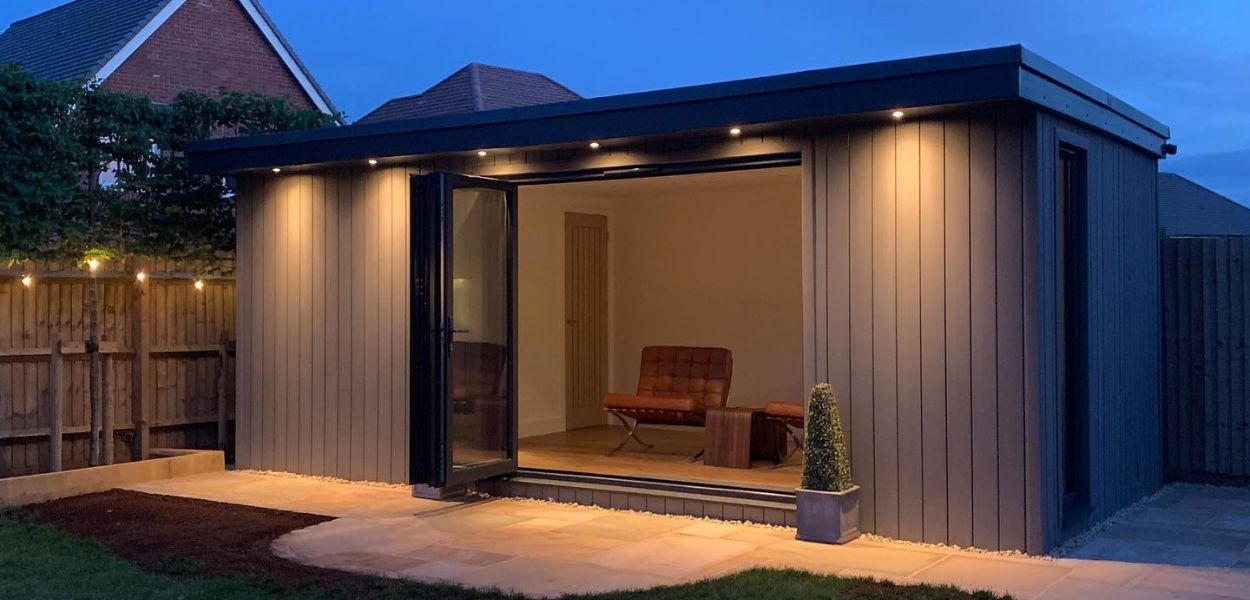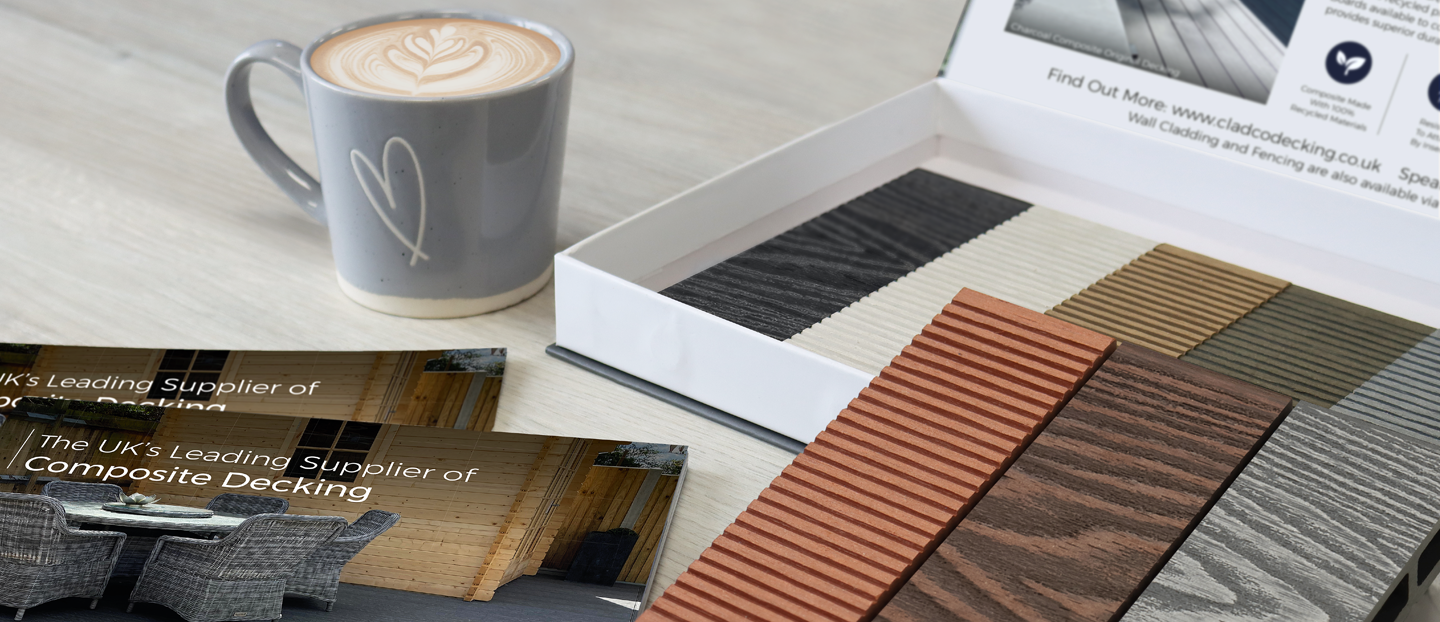In recent years, garden rooms have become an increasingly popular sight in our gardens, and it’s easy to see why. They’re a cost-effective alternative to a full extension and an excellent way to add extra indoor space without major disruption. Whether it’s a home office, a home pub/bar, a games room, or just somewhere secluded to sit and relax, a garden room gives you loads of options.
No matter the size of your garden, big, small or somewhere in between, you can install a garden room to turn an unused corner into a practical space that works for you.
Since your garden room is going to be a visible feature of your outdoor space, it’s worth making sure it complements the look of your home and garden. Cladding is a great way to personalise the design, with plenty of materials, colours and styles to choose from. Whether you go for composite, fibre cement or timber, there’s an option to suit every style and budget.
So, if you’re after an external cladding option that’s lower maintenance than timber, stylish, and sustainable, you’re in the right place. Read on for everything you need to know about cladding your garden room.
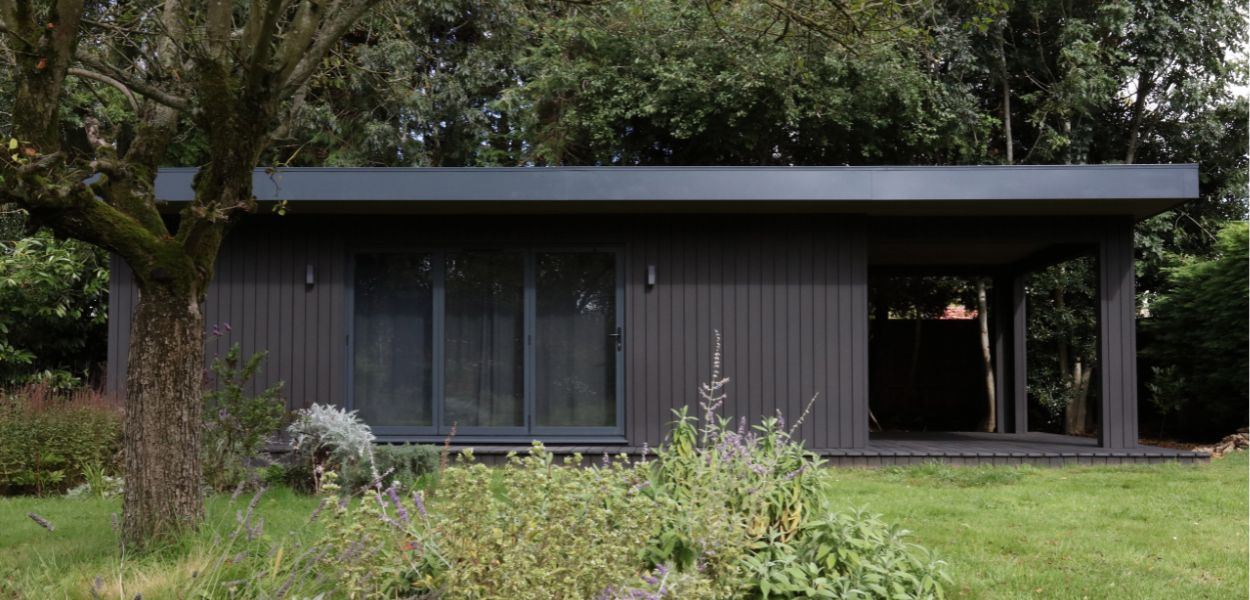
Main types of cladding for garden rooms
Wood cladding
There are many types of timber species available to use as cladding, including western red cedar cladding and Siberian larch cladding. A plus side to choosing timber cladding for the exterior walls of your garden room is that all cladding boards will present unique patterns, visible knots and textures, creating a natural appearance, and making it a great option for agricultural buildings and domestic properties wanting a more rustic look.
To keep wood cladding in good condition over many years, it is vital to keep up on maintenance. Regular cleaning, replacing damaged boards and applying protective treatments, such as natural oils, are all steps you can take to ensure your wood cladding lasts through the seasons.
To calculate how much you will be spending on your project, it is important to consider the type of wood you will be using, whether that be Siberian larch cladding, western red cedar cladding or others.
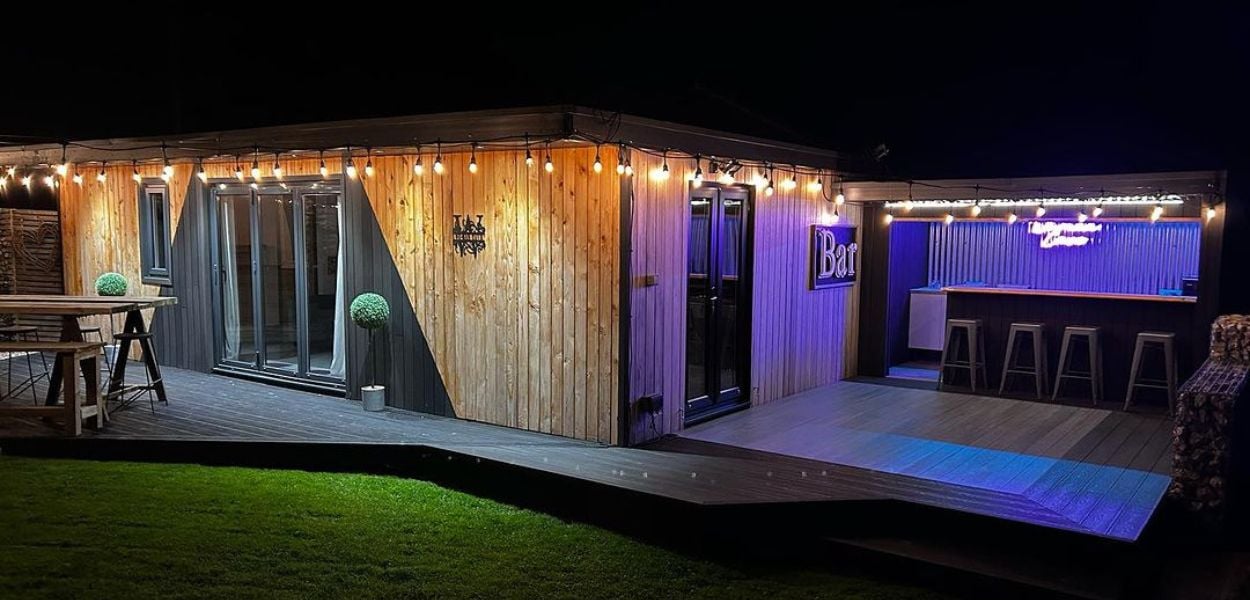
Fibre cement cladding
Cladco fibre cement lap cladding boards, also known as cement fibre boards, are a durable, dimensionally stable, and stylish option for garden rooms. Featuring an authentic woodgrain finish, they combine the natural look of timber with the long-lasting performance of fibre cement. Available in eight contemporary and traditional colours, there’s something to suit every style, but if you’re after something truly unique, our unpainted boards can be finished in any colour you like, giving you complete creative freedom.
This hassle-free cement board cladding provides rot, mould and pest resistance, and it is particularly popular to use in coastal areas due to its highly durable features. The combination of cement, sand and cellulose fibres provides a robust natural resistance.
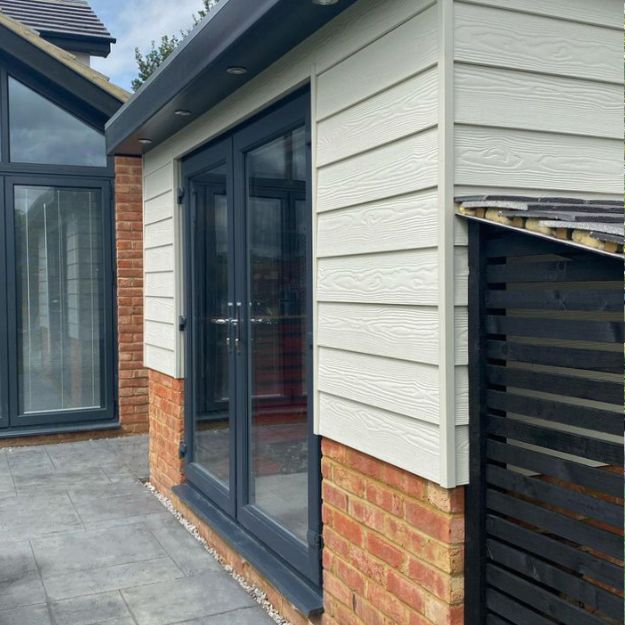
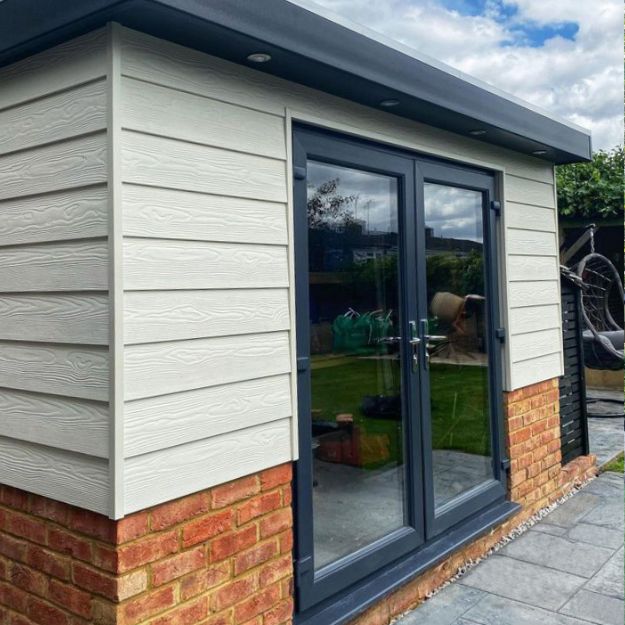
In this project, our cream-coloured fibre cement cladding has been installed on a garden studio with contrasting red brick covering the lower portion. The black door and window frames provide a modern exterior alongside our fibre cement cladding external corner trims for a seamless finish.
Compared to traditional timber, Cladco fibre cement cladding boards offer superior durability, dimensional stability, and resistance to the elements, making them an ideal choice for garden rooms. They also require minimal maintenance, so your space stays looking great with less effort over time.
Composite cladding
Cladco composite cladding is a modern alternative to timber cladding, made from recycled materials consisting of 40% recycled plastic and 60% recycled hardwood fibres, as well as colour pigment added.
At Cladco, we have a Signature composite cladding board and a ProClad composite cladding board. While Signature has eight colours to choose from, as well as a choice of smooth or woodgrain finish, our premium ProClad range features an authentic woodgrain effect design and seven colours.
Our composite cladding can be installed on your garden office room horizontally or vertically, as pictured, depending on your aesthetic preferences. Using our composite cladding boards for exterior cladding on a garden office means you will benefit from insect, pest and UV resistance for a long-lasting cladding option.
Installing Cladco composite external cladding boards is simple, and we have a handy step-by-step installation guide to help you every step of the way. Along with the cladding boards, we offer a range of trims, from corner trims to starter strips, all colour-matched to your chosen cladding for a seamless, professional finish.
Environmental impact and sustainability
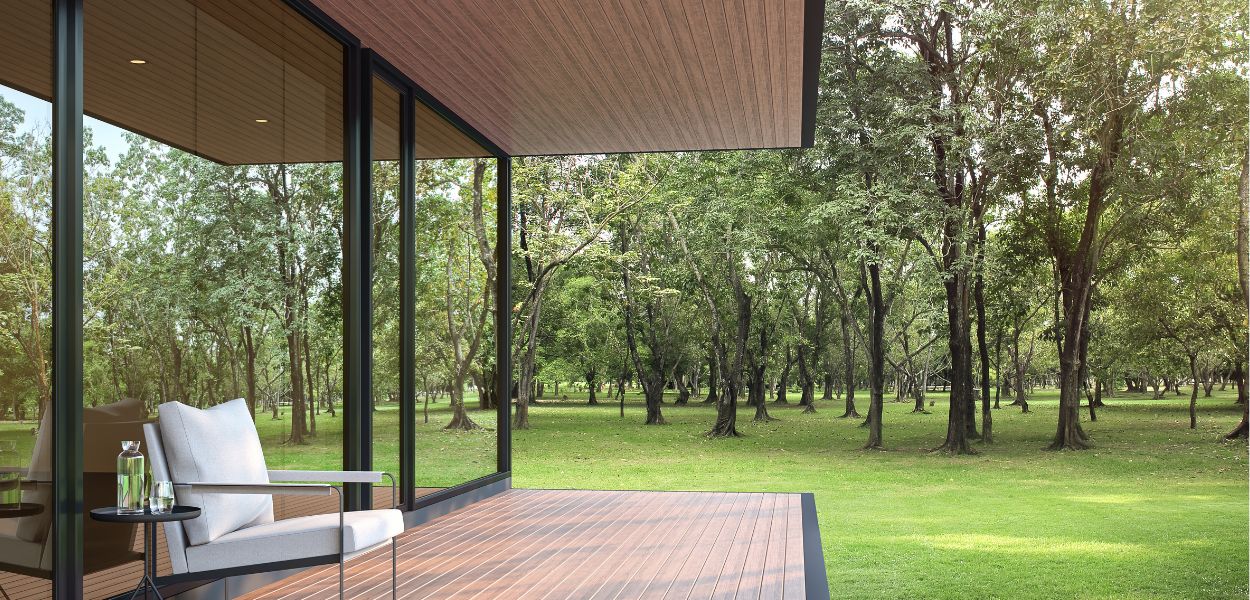
It is important to consider the sustainability and environmental impact of the cladding material you are choosing for your garden room. Some materials may be recyclable, reusable and sourced from trusted sources, whilst others may be less environmentally friendly and unable to be repurposed.
Our composite cladding boards are made entirely from recycled wood and responsibly sourced plastic. By repurposing these materials, we help reduce waste sent to landfills while creating a durable, high-quality product.
The environmental impact of timber cladding depends on the wood type and its source. Some options, like Siberian larch, can come from responsibly managed forests where trees are replanted. However, not all timber is sourced sustainably, and some choices may contribute to deforestation. Among the more eco-friendly options are western red cedar and Siberian larch cladding.
Design ideas and inspiration
Garden rooms come in all shapes and sizes, big or small, depending on your space and needs. Our customers have created a wide range of styles using various cladding materials to suit their tastes and gardens. Adding a garden room can truly enhance your outdoor space without becoming an eyesore.
Here are a few inspiring examples from our customers showcasing how they’ve transformed their gardens with stylish and functional garden rooms:
Small vs. large garden rooms
Whether you’re after a cosy little retreat or a spacious outbuilding to work from home, there’s a garden room to suit every need. Take a look at these inspiring projects featuring a variety of sizes and exterior cladding options to spark your ideas.
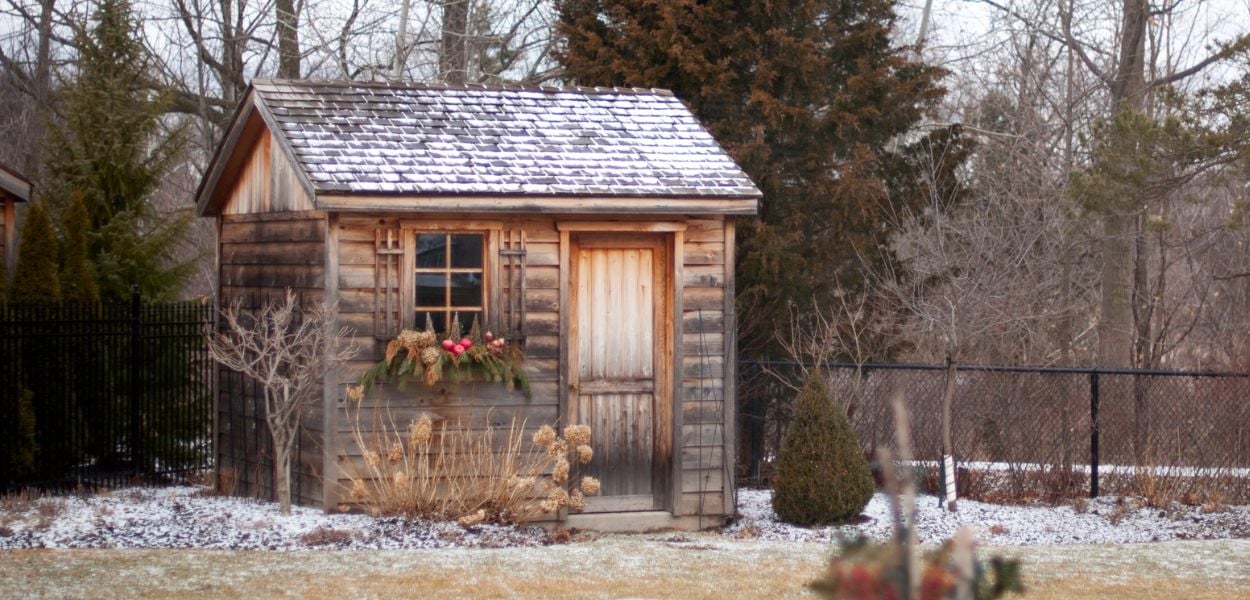
Pictured above is an example of a small, rustic-styled garden room with timber cladding, which gives the building a traditional charm. This type of garden building could be used as a handy storage space or a place to get away from it all and enjoy some much-needed peace and quiet.
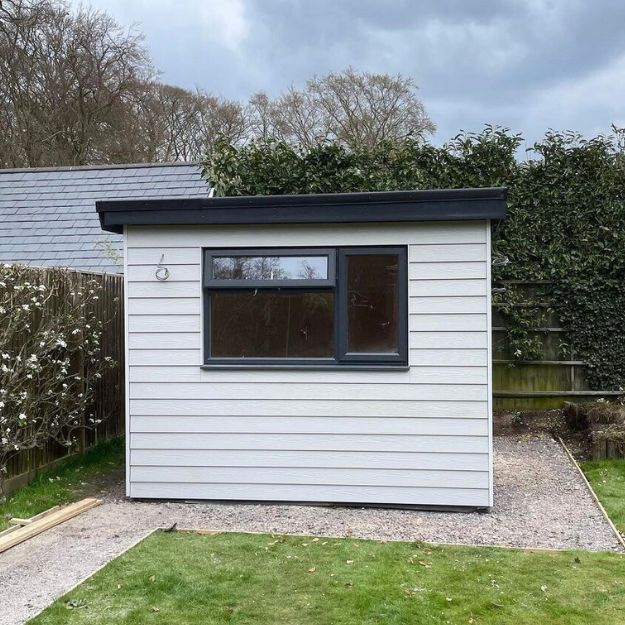
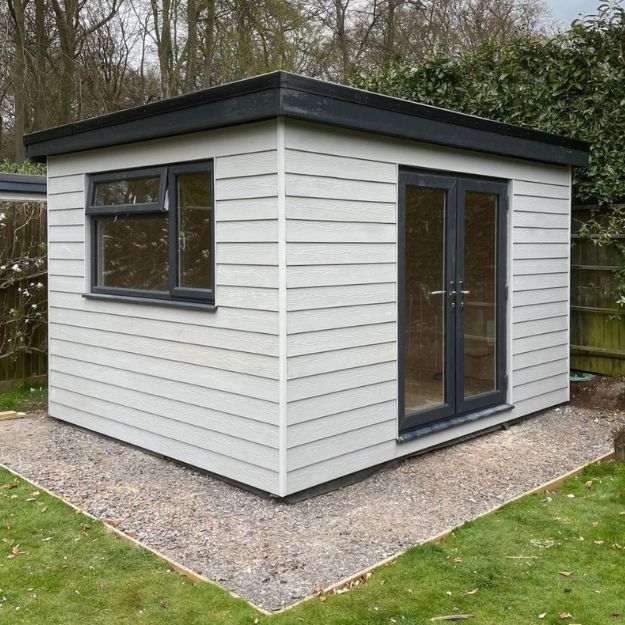
The above project is a brilliant example of how you can utilise a small area of your garden by creating a usable outbuilding. These Cladco fibre cement boards, in light grey, have been installed for a modern look with an authentic woodgrain texture.
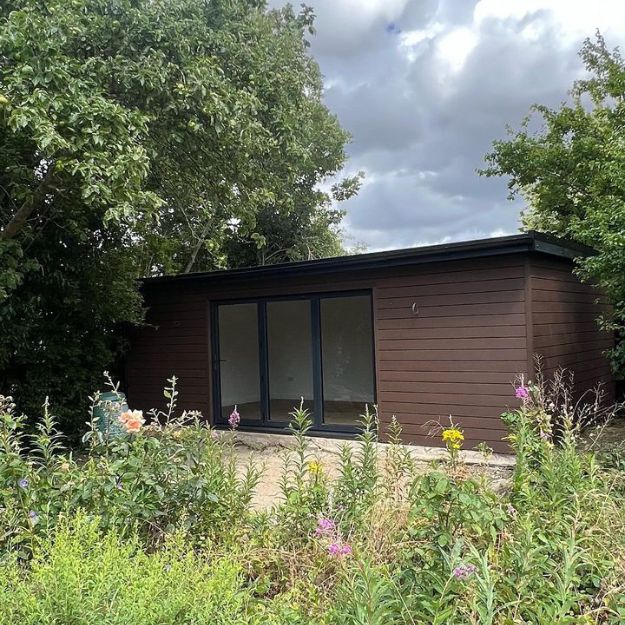
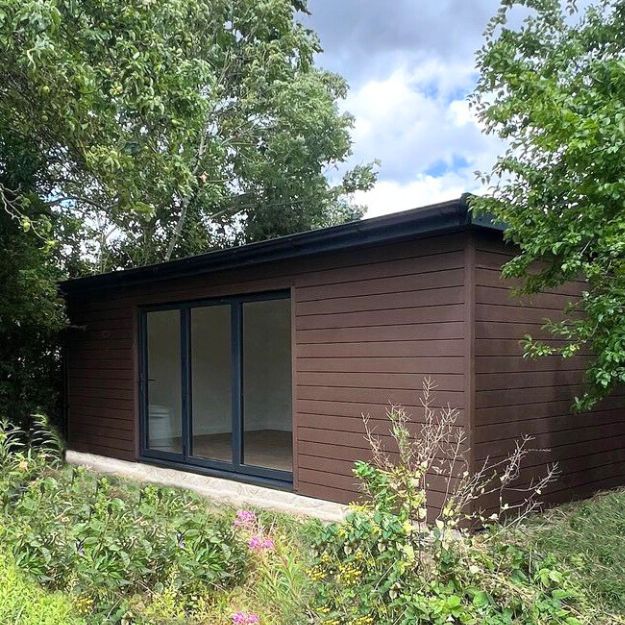
This project demonstrates a medium-sized garden room with a traditional shed appearance. Clad horizontally with our coffee-coloured Signature composite cladding boards, these help replicate a wood-like effect with a dark brown colour pigment.
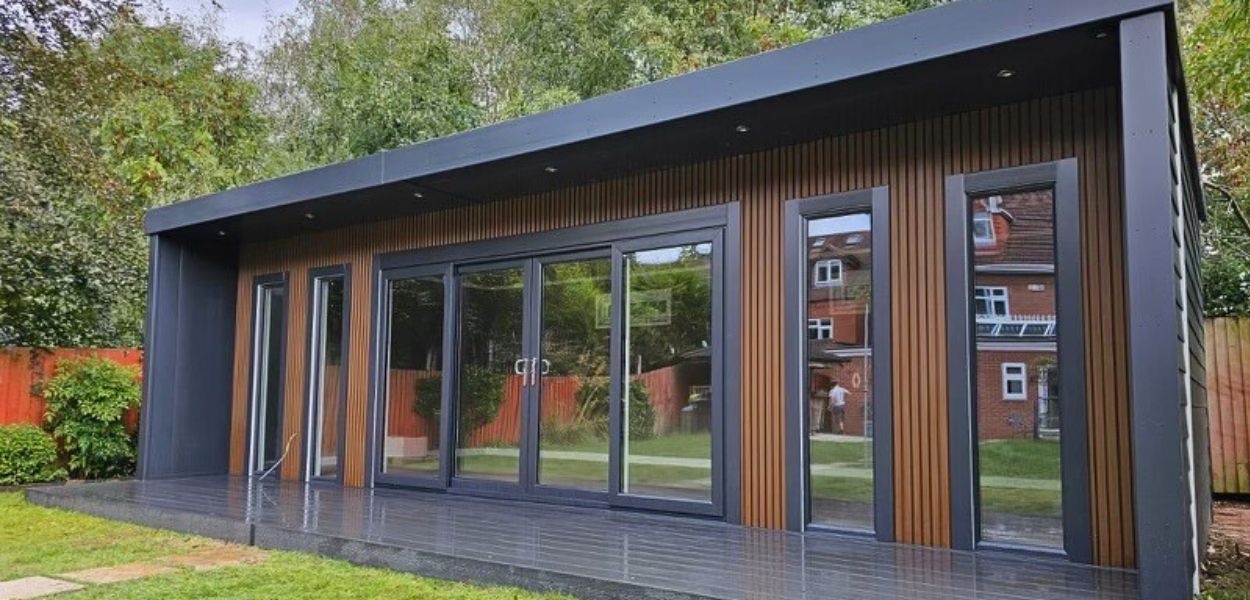
Larger garden buildings like this one need plenty of free garden space, but they’re well worth it. Rooms of this size can be used for all kinds of activities, from hosting exercise classes to using as a home recording studio or even a comfortable guest room. Shown here are our composite slatted wall cladding panels in teak, paired with stone grey composite decking for a stylish, durable finish.
Modern vs. traditional garden rooms
Garden rooms come in all styles, which can be tailored to your personal taste. The choice of exterior cladding can dramatically influence the look, from classic and traditional to sleek and contemporary. Here are some inspiring examples of garden rooms our customers have created to suit a range of styles:
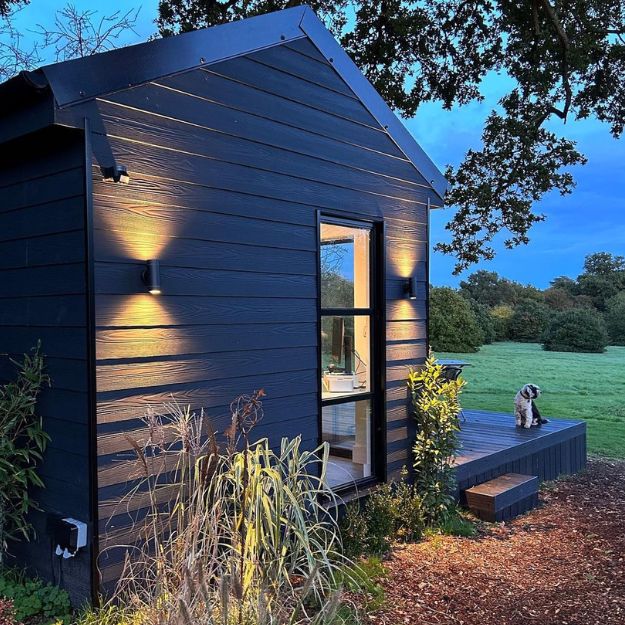
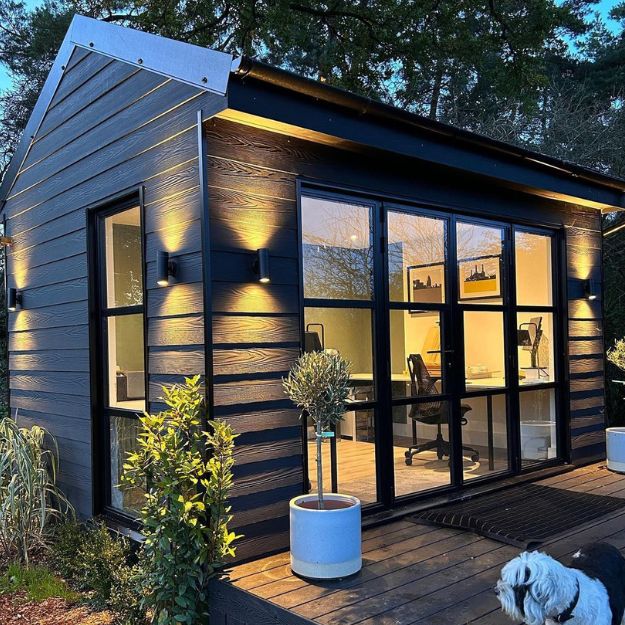
This customer project features a traditional-style garden room clad with our slate-coloured Cladco fibre cement boards. These boards offer an authentic woodgrain texture, and their feather-edge installation mimics the classic look of timber cladding found on traditional sheds. The project also includes our Signature composite decking in charcoal, completing the stylish outdoor space.
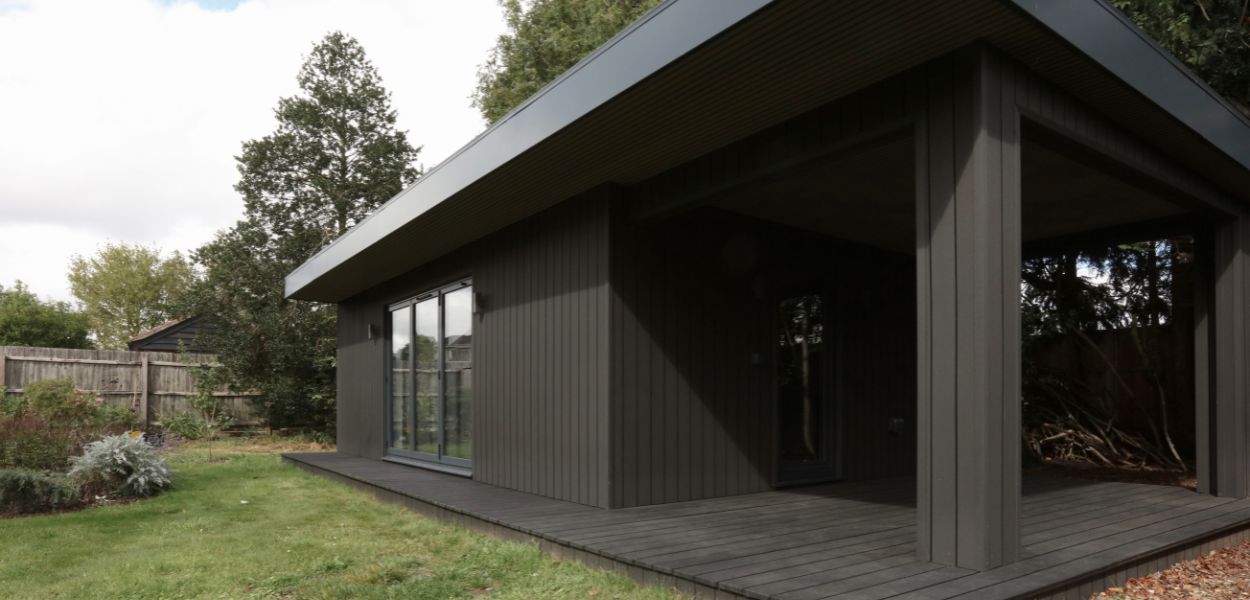
To construct a sleek, contemporary-style building, this customer has used our charcoal-coloured Signature composite cladding and decking, which is enveloped by woodland. The smooth surface of our Signature cladding ensures a polished and clean aesthetic.
Key buying criteria
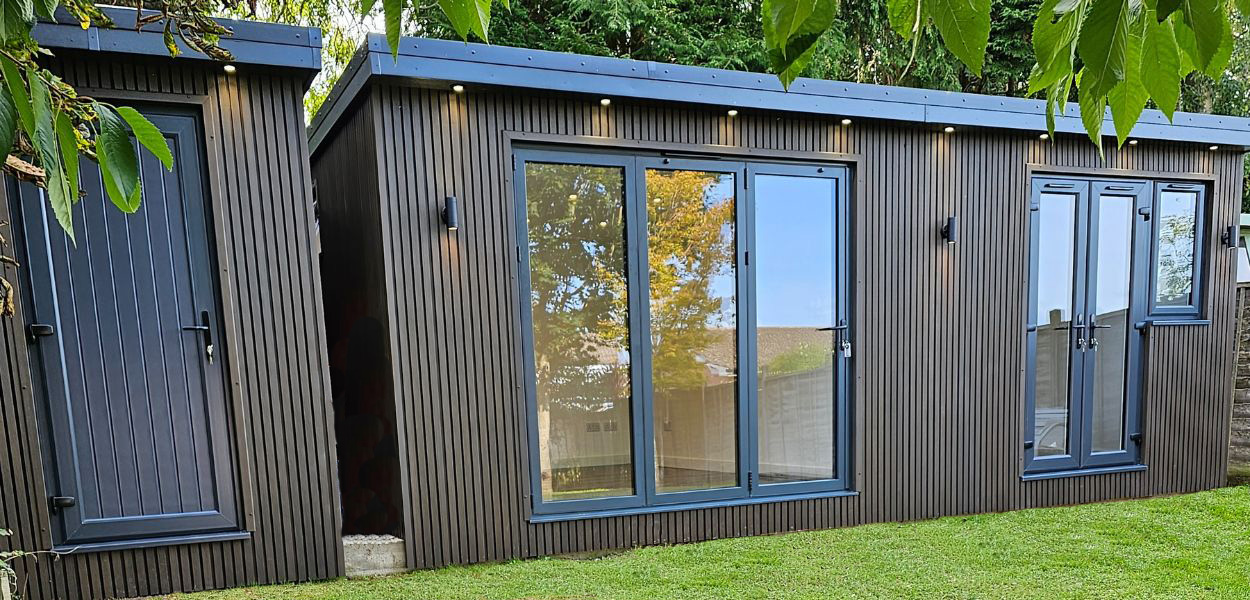
Maintenance and durability
If maintenance and durability are high on your priority list, making sure you choose the right cladding for you can make all the difference. A low-maintenance cladding material means less time, hassle and money spent on upkeep, leaving your garden room looking fresh with minimal effort.
Cladco Signature and ProClad composite cladding are designed to ensure that aftercare is much easier compared to traditional cladding materials, such as timber. Composite is simple to maintain, with just a quick clean with warm soapy water and a sponge being enough to remove dirt and debris. For best results, once clean, go the extra step of wiping the surface of the boards dry with a soft cloth or towel.
Cladco fibre cement boards are another excellent low-maintenance option. They’re weather-resistant, won’t rot, and are far less likely to need replacing compared to other traditional exterior cladding materials. To keep them looking their best, simply clean them with mild soap and cold water - an easy way to maintain their appearance over time.
Acoustic properties
Some types of cladding can affect sound insulation and can enhance acoustic properties. If you are looking to use your garden room for music or other noise-producing activities, this may be a beneficial factor for you. As your garden room may be a distance away from your house and other properties, it may not be important for you to select a sound-absorbing material for your cladding project.
Cost considerations
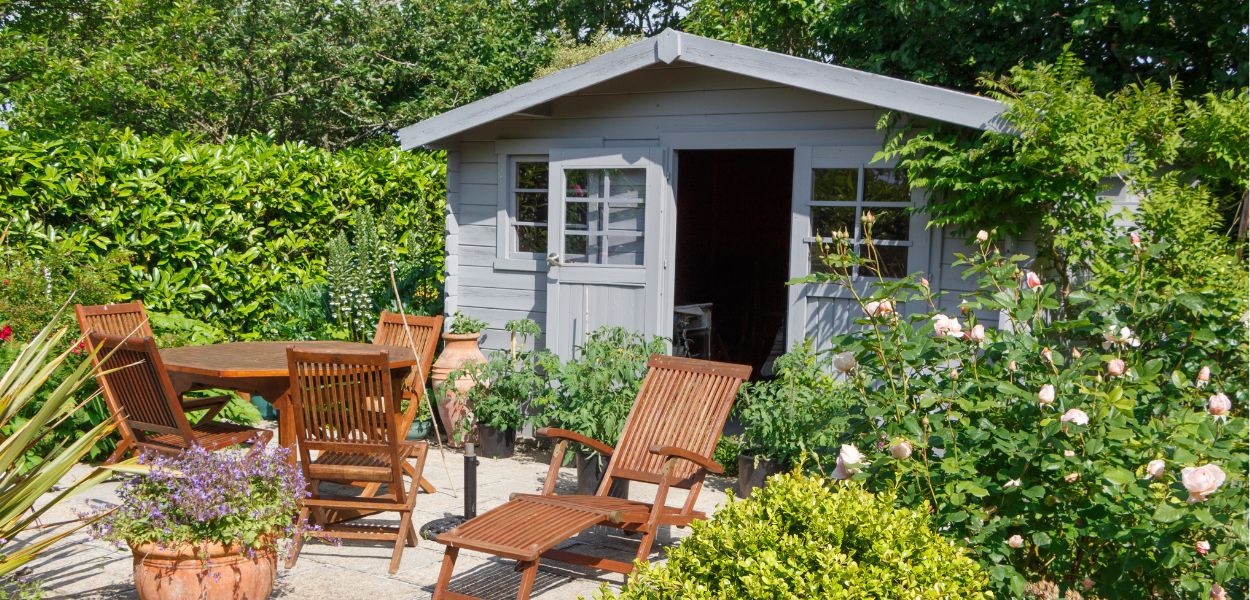
The material cost of your cladding may be one of the biggest factors in your decision. No doubt you have a budget that you will be very keen to stick to. Cladding can vary in price, depending on the material, installation process and amount of product you will need.
Our fibre cement lap wall cladding costs £15.06 (incl. VAT) per 3.6m board. Thanks to its low-maintenance design and straightforward installation, it’s a cost-effective choice in the long run, with minimal upkeep required after the initial purchase.
Cladco offers a range of composite cladding boards to suit different budgets and project styles. Our 3.6m original Signature composite cladding is priced at £17.30 (incl. VAT), providing a reliable and cost-effective option. For a more natural, textured finish, the 3.6m Signature woodgrain composite cladding is available at £21.54 (incl. VAT). If your project calls for a more premium look with added durability, the 3.6m ProClad woodgrain composite cladding board, featuring a protective polymer-capped surface, costs £23.94 (incl. VAT).
For a modern, slatted aesthetic, our capped composite slatted cladding is a popular choice, priced at £26.95 (incl. VAT) per 2.5m board. Each option is designed for low maintenance and long-lasting performance, helping you achieve the finish you want with minimal upkeep over time.
Other types of cladding, such as timber, can range in price from around £20 per m² to over £100 per m², depending on the wood type and quality. It's also important to factor in the long-term costs as timber often requires ongoing maintenance, such as staining or sealing, which adds to the overall expense.
So, when asking “What cladding is cheapest?”, be sure to look beyond the initial price. Considering the full picture, including installation and upkeep, will help you make a more cost-effective and informed choice in the long run.
Installation: vertical vs. horizontal cladding
Some types of cladding can be installed either vertically or horizontally, both producing alternative styles. Our composite cladding can be installed in both of these ways, but our fibre cement boards should only be installed horizontally due to the dimensionally stable, feather board installation design.
Other types of exterior cladding, such as Siberian larch, western red cedar, and metal cladding, each have their own recommended installation methods. Timber cladding, for example, is often versatile enough to be fitted both horizontally and vertically, depending on the desired look and performance. It's always important to follow manufacturer guidance to ensure the best finish and long-term durability of your cladding installation.
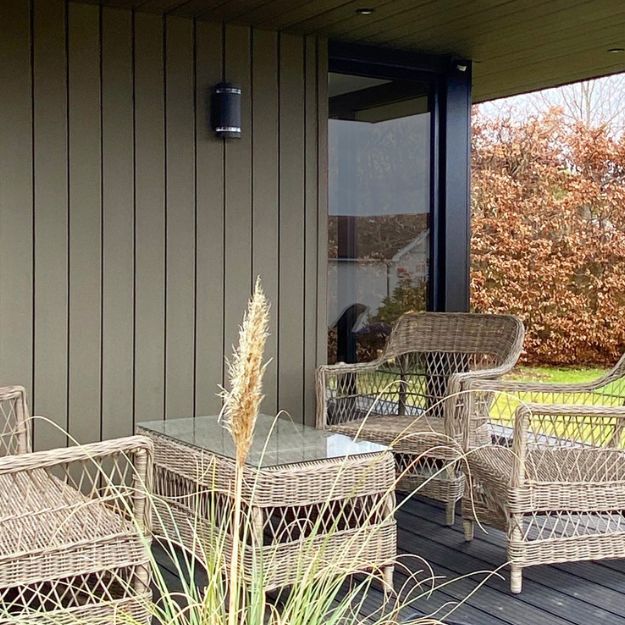
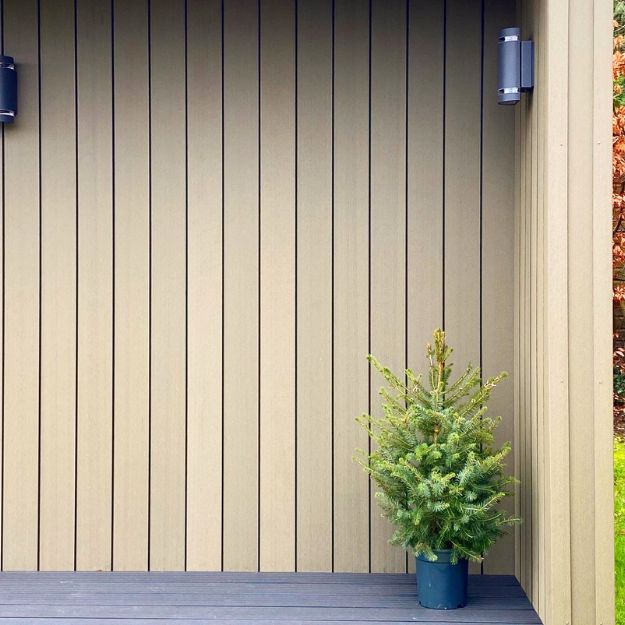
In the above project, the customer has decided to install their Signature composite cladding vertically to achieve a contemporary and sleek appearance for their garden room. The choice of olive green-coloured Signature composite cladding boards blends the building into the natural environment around it.
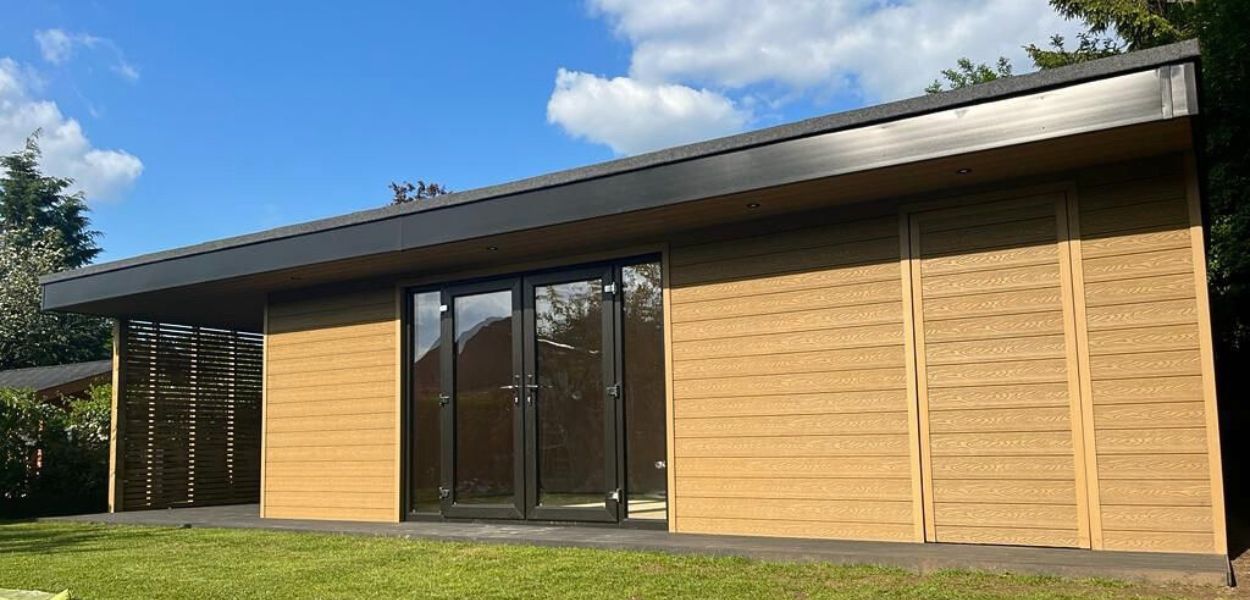
In this example, the customer has chosen a horizontal installation using our teak-coloured Signature woodgrain composite cladding. The result is a garden room with a traditional look that captures the warmth of timber while offering the benefits of a straightforward installation.
Conclusion
To conclude, when choosing a garden room cladding material, it is essential to acknowledge all of the factors we have detailed above. Once you have decided whether aesthetics, costs, installation or sustainability is the most important for you, you can go on to make an informed decision.
Many cladding options have a perfect balance between these factors, such as our composite cladding ranges and fibre cement lap wall cladding; all of which are available in a variety of colours, with various benefits, including durability and simple installation.
Last Updated: September 24, 2025
Please note all information is correct at the time of writing. However, we encourage you to do your own research to ensure it remains accurate and relevant to your needs.


